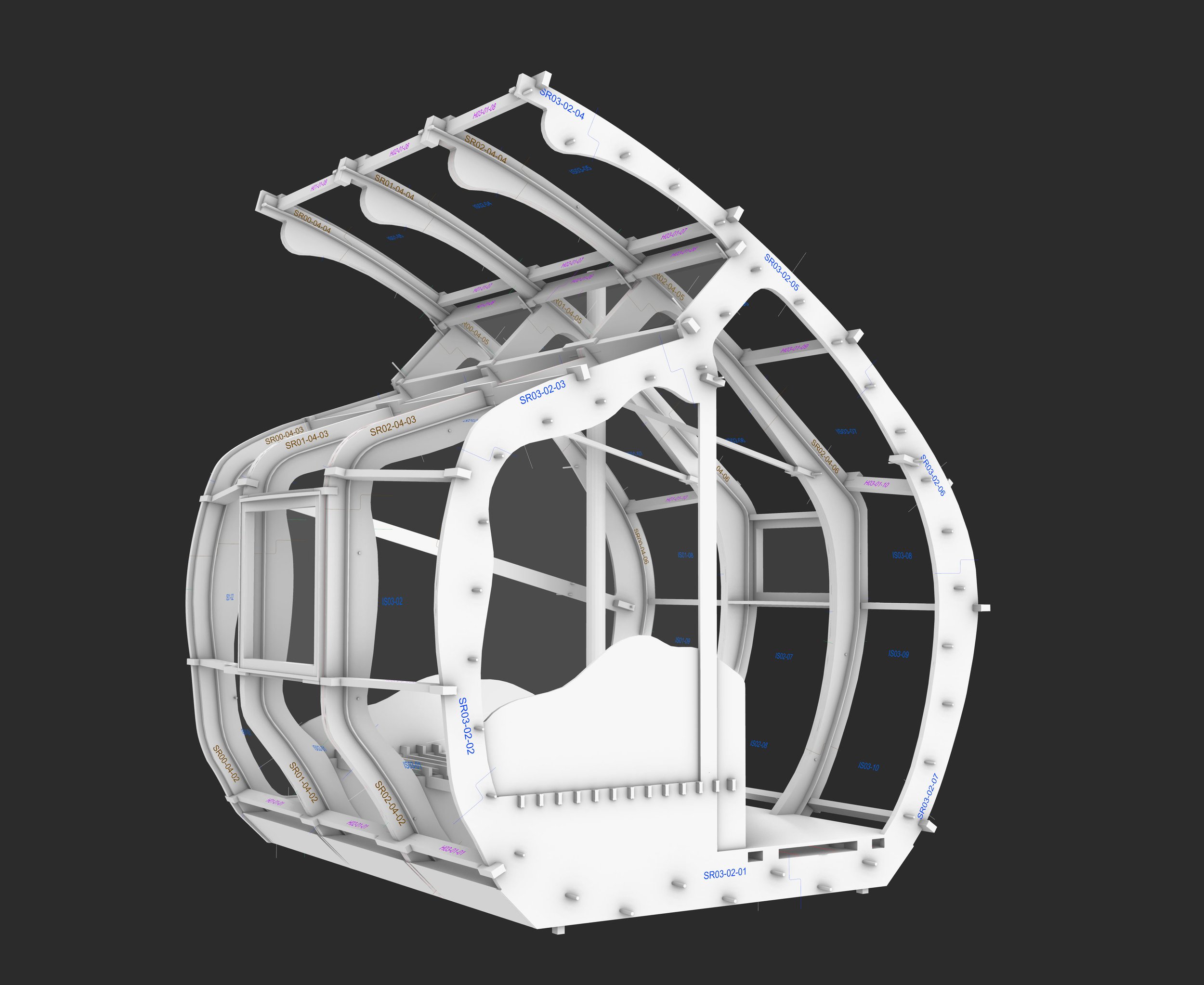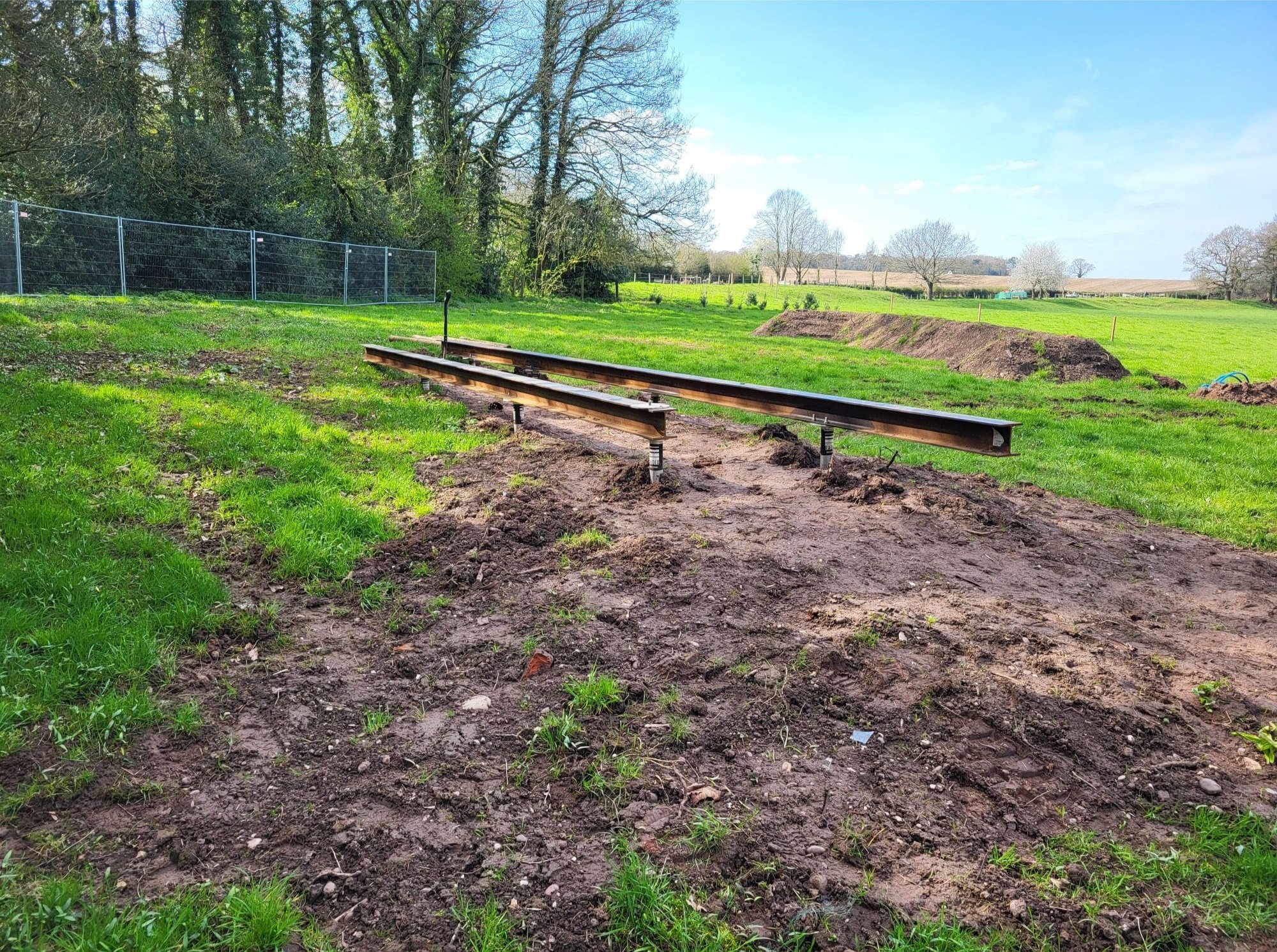Architecture Integrated With Nature: Design to Cut Project Costs
We help Maximize Your Rental Income with Eco-homes and Luxury Holiday Homes, provided by RIBA Chartered Architects.
Nature in Architecture
One of the great advantages of developing the Monocoque Cabin as a refined product over many years is the significant cost savings achieved without compromising quality. This ongoing process has been a collaborative effort involving Innovate UK, the Manufacturing Technology Centre (MTC) in Coventry, Blockbuild, and the renowned engineering firm Price & Myers.
In this article, we’ll explore the Monocoque Cabin—and its new evolution, the Monocoque Cabin Mark 2—as a case study to demonstrate how you, too, can reduce costs while delivering a project that is innovative, sustainable, and beautifully integrated with nature.
Digital Twin Modelling
Another highly effective way to reduce project costs is by creating a digital twin model at the outset. A digital twin is a precise digital representation of the project, encompassing every detail of how it will look, what materials will be used, and exactly how it will be constructed. This process can include tools such as a point cloud measured survey and a comprehensive topographical survey, providing an accurate understanding of the site’s makeup from the very start.
While this may seem like an obvious or even standard approach, it is surprisingly underutilised in practice. Many clients hesitate to invest in the creation of a digital twin, viewing it as an additional early-stage cost that can be avoided. However, this mindset overlooks a key benefit: the potential to prevent significant expenses further down the line.
One of the most costly elements of construction is the issue of change orders. These occur when unforeseen changes are required during construction—perhaps due to misinterpretations of the site or missing information from earlier surveys. By the time a change order is issued, the contractor is already engaged, and clients often have little choice but to accept the costs presented, which can be substantial and unlikely to be competitive.
A digital twin minimises the risk of these change orders by ensuring the design and site understanding are fully resolved before construction begins. By investing in this detailed upfront planning, clients can avoid the financial surprises and inefficiencies that typically arise during the build phase, ultimately saving significant amounts throughout the project.
Digital Twin Model
Reduce the Scale
One of the most effective ways to reduce project costs is to reassess and reduce the scale of the design before construction begins. All too often, projects are unnecessarily large and, unsurprisingly, end up running over budget. It’s not uncommon to see developments where certain spaces remain unused, becoming costly redundancies rather than assets.
This is where a skilled architect can deliver significant value—saving you more than their fees might initially suggest. Thoughtful, efficient space planning is a cornerstone of cost-saving design. For instance, incorporating clever solutions like foldable furniture or built-in furnishings integrated into the structure itself can optimise space while reducing material costs.
Though these adjustments may seem small, they add up quickly. Incremental design interventions, combined with a focus on efficiency, can drastically reduce the overall cost of a project while maintaining functionality and aesthetic appeal.
Utilising the Natural Environment
A key consideration in reducing project costs lies in harnessing the natural environment, particularly through the use of passive ventilation. There are two types of ventilation systems in buildings: passive and active. Passive ventilation occurs naturally and works in harmony with the environment, whereas active systems rely on mechanical solutions.
Passive ventilation, an integral feature of much of the world’s vernacular architecture, is sadly becoming a lost art. Historically, this approach used nature to warm or cool buildings, adapting to local climates with minimal reliance on external systems. The major advantage of passive design is the long-term savings it offers. A project that is well-designed and strategically situated within its site can naturally benefit from its surroundings, reducing the need for heating or cooling systems and thereby cutting ongoing energy costs.
Instead of relying on expensive, post-rationalised electrical mechanical systems, passive solutions allow the architecture to work with the environment rather than against it. While it’s unlikely that passive systems can eliminate the need for mechanical interventions, they can drastically reduce their scope and scale. For example, a well-ventilated, passive-focused dwelling might run efficiently on solar energy without requiring a heat pump, saving thousands of pounds.
Even without renewable systems, passive design can reduce reliance on conventional heating, such as radiators, cutting both installation and operational costs. By embracing passive strategies, a project not only benefits from reduced upfront and ongoing costs but also delivers a building that works in harmony with its natural setting.
Working with the Ground
Every site comes with a unique topography, and too often this natural characteristic is overlooked during the design process. Even a seemingly minor slope might appear insignificant at first, but it can have a major impact on project costs further down the line.
For instance, creating a flat site and foundation—particularly with concrete—can involve extensive excavation and remediation work, which can quickly escalate costs. Concrete foundations are among the most expensive aspects of a building due to the sheer volume of material required and the associated labour. Additionally, contractors typically price these works with a high-risk margin, as errors in pouring concrete foundations are not uncommon and can require costly remediation.
Rather than forcing the site to conform to rigid design expectations, a better approach is to work with the natural topography. Thoughtfully integrating the building into the existing landscape not only reduces the need for expensive excavation but also creates a design that feels more grounded in its environment. By adapting to the terrain, you can avoid unnecessary costs while delivering a project that is both practical and contextually sensitive.
One effective way to address the challenges of sloped or uneven sites is by using ground screws or screw piles. These innovative foundation systems provide a stable, flat base for construction without the need for extensive excavation or ground remediation. As shown in the accompanying photograph, the screws are driven directly into the ground, minimising disruption to the site.
Ground screws are particularly advantageous in sensitive areas. Tree surveyors and planning officers often favour them because they can be installed around existing tree roots, preserving the health of the trees. Similarly, ecologists appreciate ground screws for their minimal environmental impact—they don’t remove the natural ground surface or foliage, which means the existing ecosystem remains largely undisturbed.
By adopting ground screws, you can significantly reduce foundation costs and environmental disruption while ensuring the project aligns more harmoniously with the site’s natural features. This approach not only saves money but also demonstrates a thoughtful commitment to sustainability and ecological preservation.
Ground Screws are an effective way to create a flat surface on a sloping site.
Conclusion
In our opinion, the most effective way to save money on a project is through thorough and intentional planning. This means developing a deep understanding of the site, its unique context, and the surrounding environment. By working in harmony with the natural topography, incorporating sustainable materials, and leveraging the environment for strategies like passive ventilation, you can create a design that is cost-effective, efficient, and environmentally sensitive.
Effective planning ensures that every aspect of the project—whether it’s foundation methods, energy systems, or design interventions—is tailored to the specifics of the site. This not only reduces costs but also delivers a project that is seamlessly integrated with its environment, creating long-term value for both the client and the planet.




